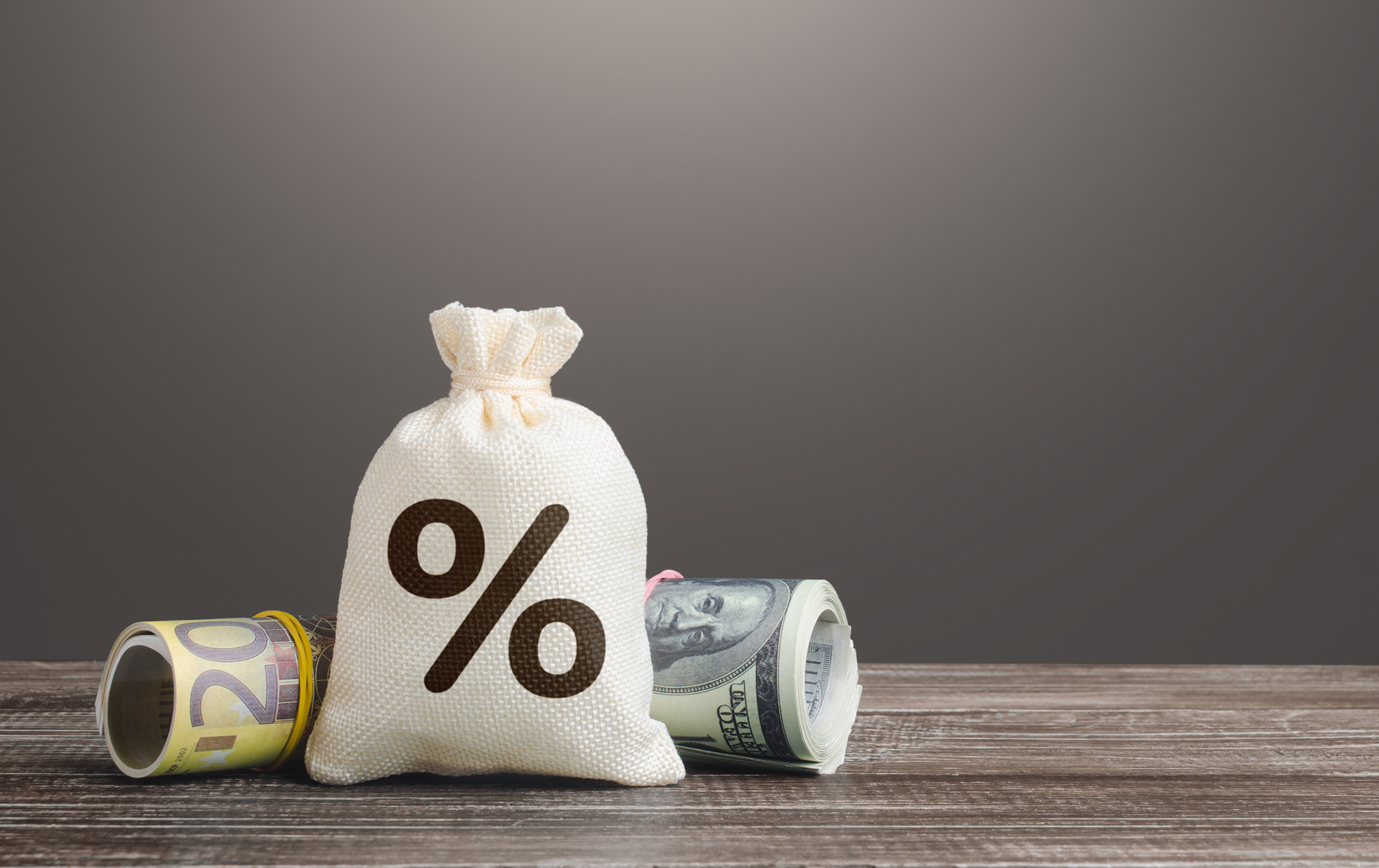
Ben Trotter
November 3, 2025
•
9 min read
Most of us feel the effects of rate changes without ever connecting the dots — mortgage payments creeping up, credit card debt getting heavier, stock portfolios swinging more wildly. But interest rates aren’t random. They’re a lever central banks pull to keep the entire economic machine balanced.
Let’s break down what’s actually going on, and how the same force that shapes global markets also ripples into your daily life — including your stress levels, investment choices, and even career plans.
At its simplest, an interest rate is the cost of borrowing money or the reward for lending it. When you borrow, it’s the price tag on your loan. When you save or invest, it’s the return you earn for letting someone else use your money.
That number — expressed as a percentage — determines how freely money flows through the economy. Interest rates influence everything from how businesses expand to whether you buy a home or stay renting. Think of interest rates like the thermostat for the economy: turn it up, and things slow down; turn it down, and things heat up.

Interest rates move in cycles, almost like economic seasons and the “weather” is driven by three main forces: inflation, economic growth, and employment.

Interest rates touch nearly every part of your financial routine — even if you never think about them. When rates are high, mortgages and car loans get more expensive, credit card balances grow faster, and monthly payments can take a bigger bite out of your budget (Freddie Mac PMMS). It can also mean fewer job openings as businesses slow hiring, and higher returns on your savings accounts as banks compete for deposits (Federal Reserve Policy Overview). When rates are low, borrowing costs drop, making it easier to buy a home, finance education, or consolidate debt — but your bank account’s interest earnings shrink, and inflation can creep in as spending heats up.
For business owners, higher rates can squeeze margins by making it more expensive to fund expansions, upgrade equipment, or refinance existing loans. This often slows growth plans and can shift focus toward efficiency and cost control. Lower rates, on the other hand, open the door to cheaper financing for acquisitions, inventory, and hiring — but can also increase competition as more players flood into the market (Federal Reserve: Dual Mandate). For investors, rate changes move asset prices in predictable but impactful ways: bond prices move inversely to rates, value stocks and financials often hold up better in high-rate periods, while growth stocks and real estate tend to shine when rates fall.
Inflation is still running above what central banks consider healthy, so interest rates remain elevated — above 5% in the U.S. — in an effort to bring prices under control. Bond yields have been swinging as investors debate whether the economy is losing momentum or inflation will prove stubborn. The result is a mixed picture: businesses and homeowners are feeling the strain of higher borrowing costs, while savers are finally seeing meaningful returns on deposits. What this means for investors and real estate:
Brightn Note: High rates can do more than stress your budget — they can stress your mind. When borrowing feels expensive, people often freeze on big purchases or overanalyze every decision. That’s why Brightn pairs money planning with mood tracking: to help you notice when rate-driven stress is steering your choices more than your actual goals.

Interest rates might sound abstract, but they quietly decide how much you’ll pay for a home, how quickly your investments might grow, and how much breathing room your business has to expand.
Like your own pulse, rates tell a story about the system’s health, and about how you might need to adjust your financial “training plan.” The more you understand that rhythm, the less you’ll react out of fear when headlines scream “Rate Hike!” or “Cut Coming!” and the more you’ll act from a place of strategy.

Ready to take charge of your mental wellness? Try Brightn free today.

1) What makes bond prices fall when rates rise?
New bonds come out with higher coupons; old, lower-coupon bonds must drop in price to compete. That inverse relationship is core fixed-income math (Investor.gov explainer).
2) Why do higher rates tend to hit growth stocks harder?
More of their value sits in profits far in the future. When discount rates rise, those distant cash flows are worth less today (Valuation primers—NYU Stern).
3) I’m choosing between a fixed and variable mortgage—what should I weigh?
Fixed protects your payment if rates rise further; variable can save money if cuts arrive. Check current spreads, your time horizon, and refinance flexibility (Freddie Mac PMMS for current averages).
4) Are high yields on cash “too good to be true”?
They reflect today’s restrictive policy. Great for parking short-term funds, but reinvestment risk is real if rates later fall (Policy context—Federal Reserve).
5) How do I follow the outlook without doomscrolling?
Watch three things: the monthly CPI report (BLS), the 10-year Treasury yield (FRED DGS10), and market-implied odds for rate moves (CME FedWatch).
6) Can Brightn actually help with money choices?
Yep. By pairing mood tracking with planned money rituals, you reduce stress-driven spending and increase follow-through on longer-term goals (see our Wealth content in-app).